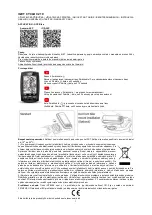
18
4.3 Daylight-dependent switch-off
In the example (switching mode), the light value is initially above the brightness threshold.
There is no reaction in terms of light output when movement is detected (A). If the light value
falls below the threshold, and the occupancy detector detects movement, the lighting is
switched on (B).
The curve (brightness) describes the total light intensity in a room with daylight and artificial
light. After the lighting is switched on, time T1 starts. This time can be set in the parameters
under “Calculate threshold for switching off after”. As seen in the diagram, fluorescent lamps
for example only reach their maximum brightness after a few minutes. After time T1, the
switch-off threshold is calculated. The increase in brightness achieved in time T1 is added
to the threshold in the parameter settings. In addition, a selectable tolerance is added to this
value. In regulating mode, this setting does not apply, as regulation is made to the set value.
During the time in which the actual light level is below the switch-off threshold, any
movements, which occur, re-trigger the follow-up time, so that the lighting remains on (C).
If the proportion of daylight rises slowly to (C) and exceeds the switch-off threshold (D),
delay time T2 starts. This is Daylight-depending shutdown (switch off), which causes the
lighting to be switched off although the follow-up time has not yet expired. The light value
over this time must remain above the switch-off threshold. This function is for energy saving.
The lighting switches off after time T2. In regulating mode, T2 cannot be changed. The
duration here is 60 seconds.
For fluorescent lamps, we recommend a duration of 5-10 minutes. For resistive loads such
as incandescent lamps, a duration of 5 minutes is sufficient.
Daylight-depending shutdown (switch off) is not to be confused with follow-up time.
Summary of Contents for CHORUS GWA9531
Page 7: ...7 ...
Page 14: ...14 ...
Page 15: ...15 Regulation mode ...
Page 34: ...34 ...
Page 38: ...38 ...
Page 42: ...42 ...
Page 45: ...45 ...
Page 46: ...46 9 COMMUNICATION OBJECTS ...















































